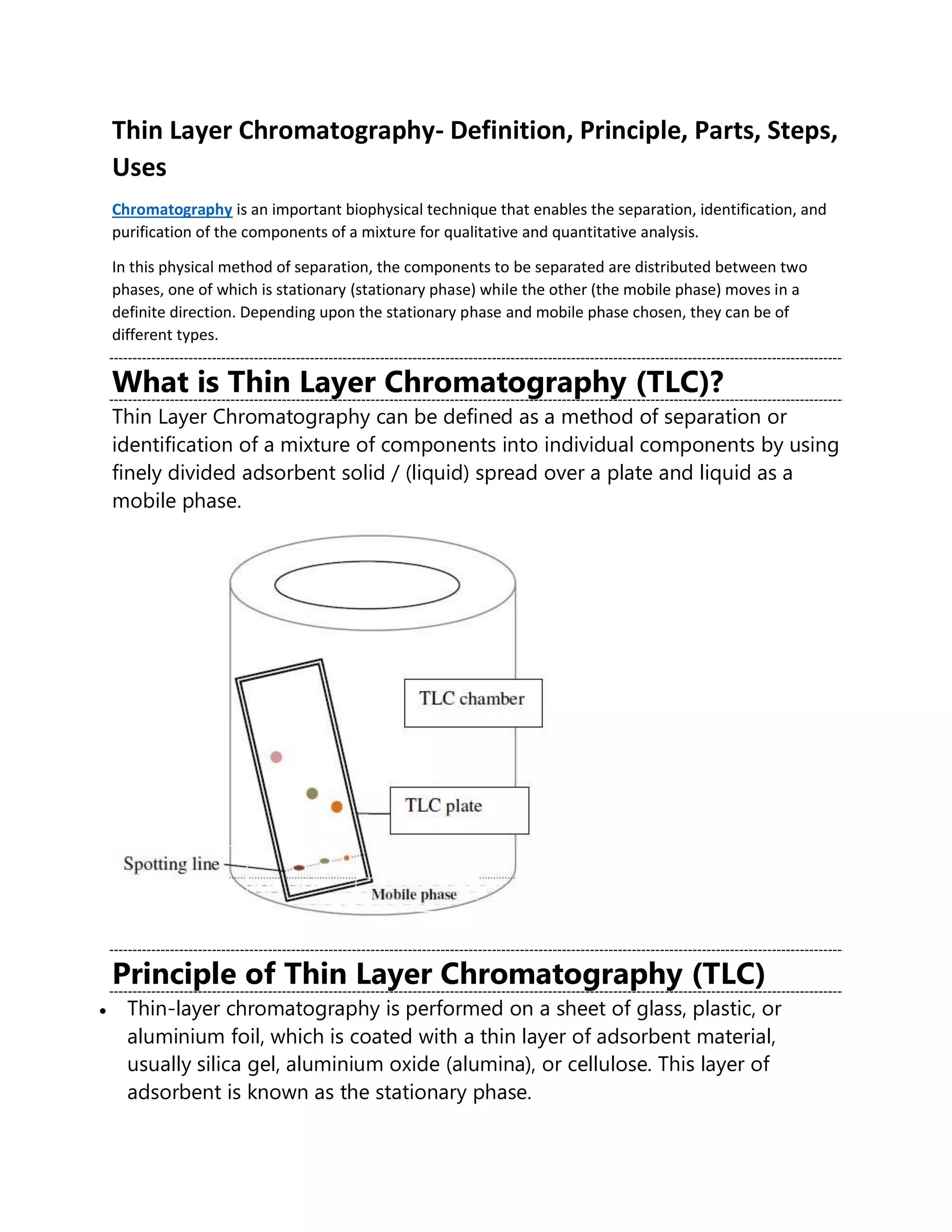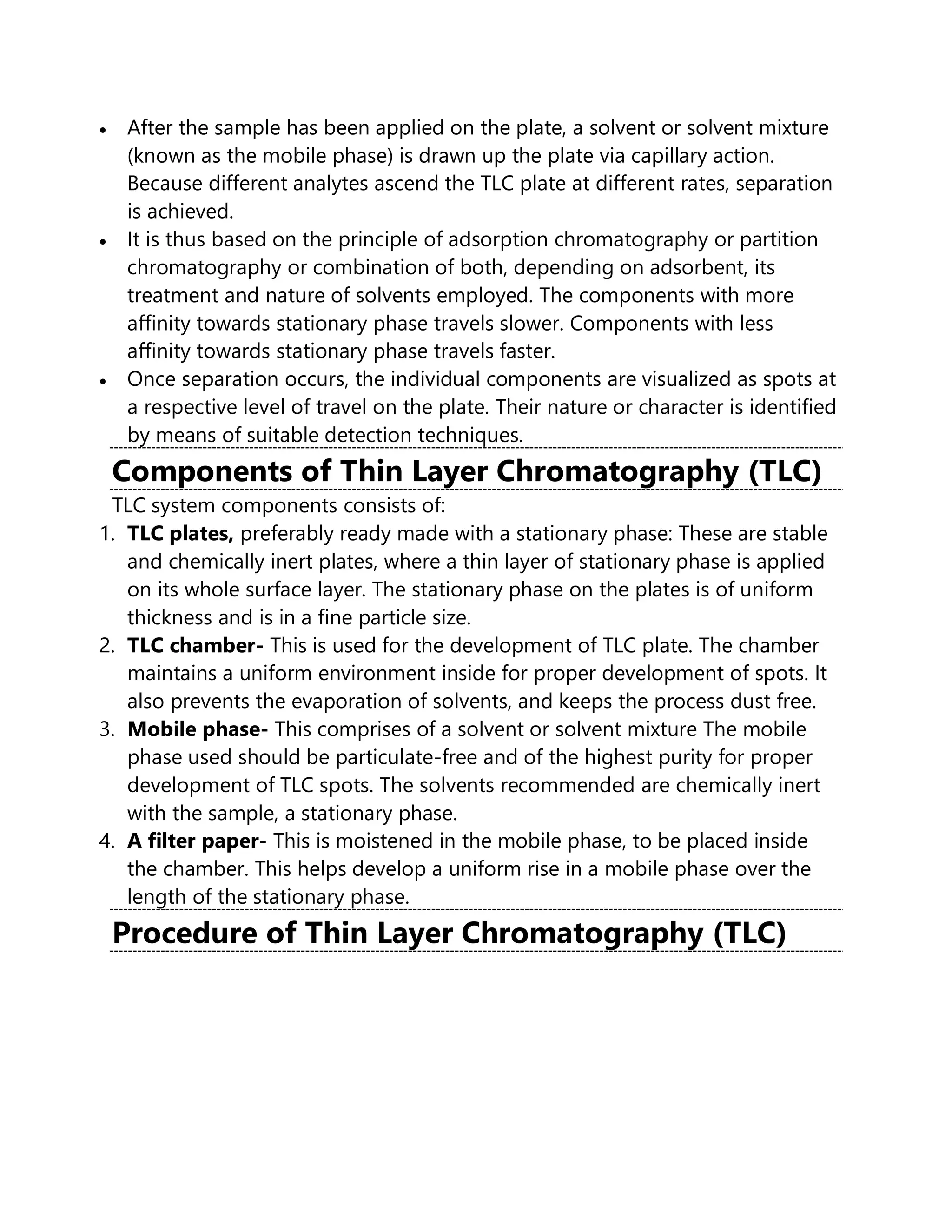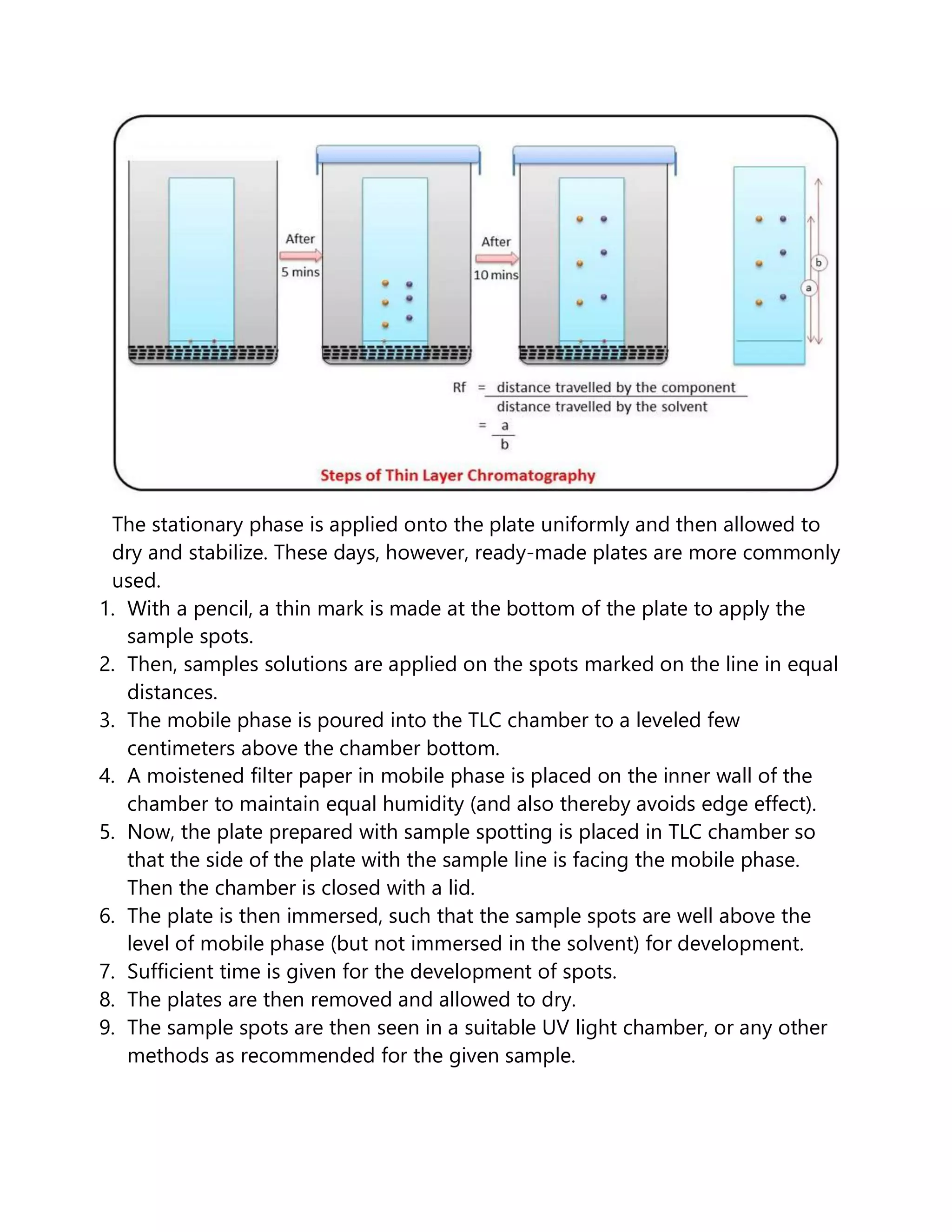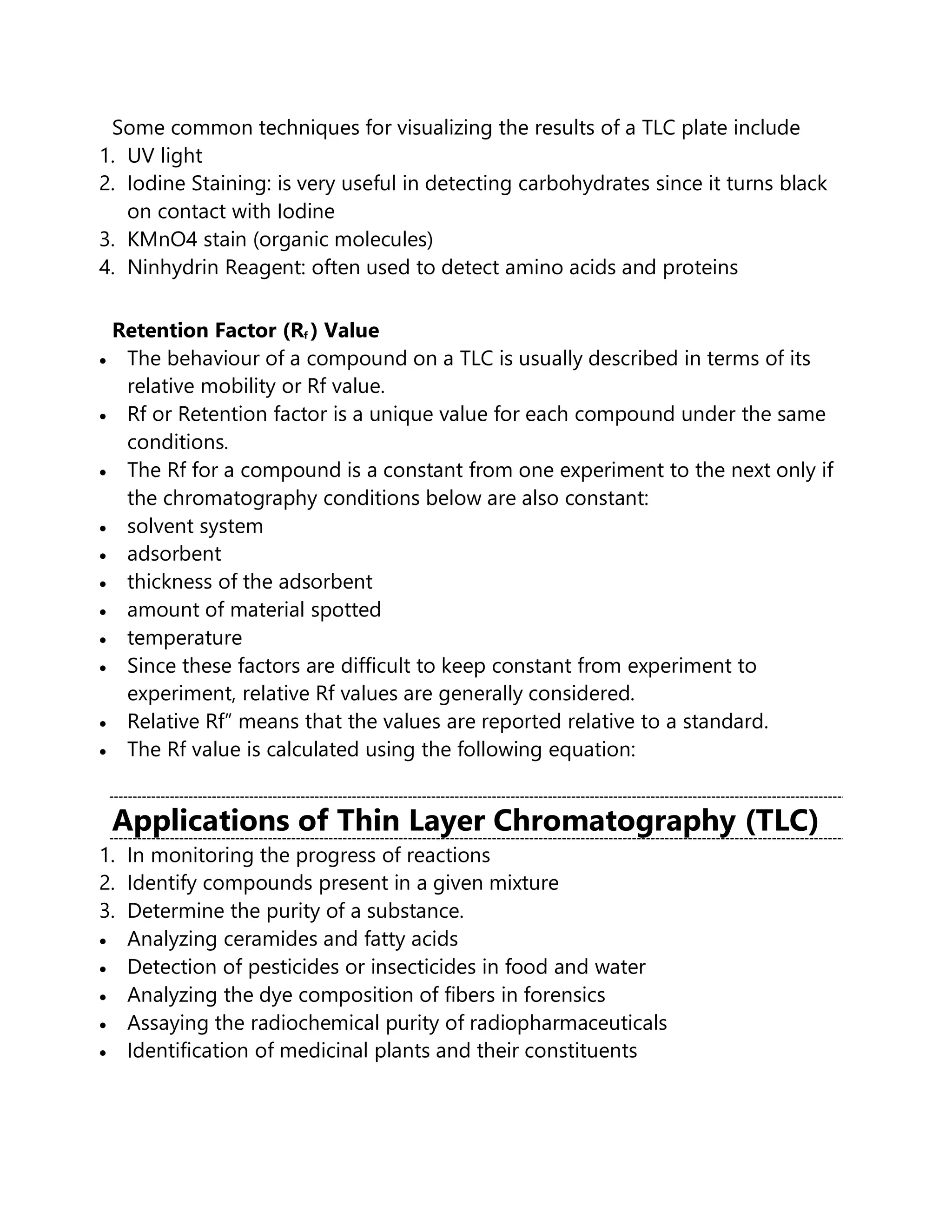Thin layer chromatography (TLC) is a technique used to separate components of a mixture based on their affinity to a stationary phase and a mobile phase. In TLC, a mixture is applied to a thin layer of adsorbent material like silica gel coated on a plate. A mobile phase like a solvent is drawn up the plate via capillary action, causing different components to ascend at different rates based on their interactions with the phases, achieving separation. Once separated, the individual components can be visualized as spots on the plate and identified. TLC is useful for analyzing mixtures, determining purity, and identifying unknown compounds.




